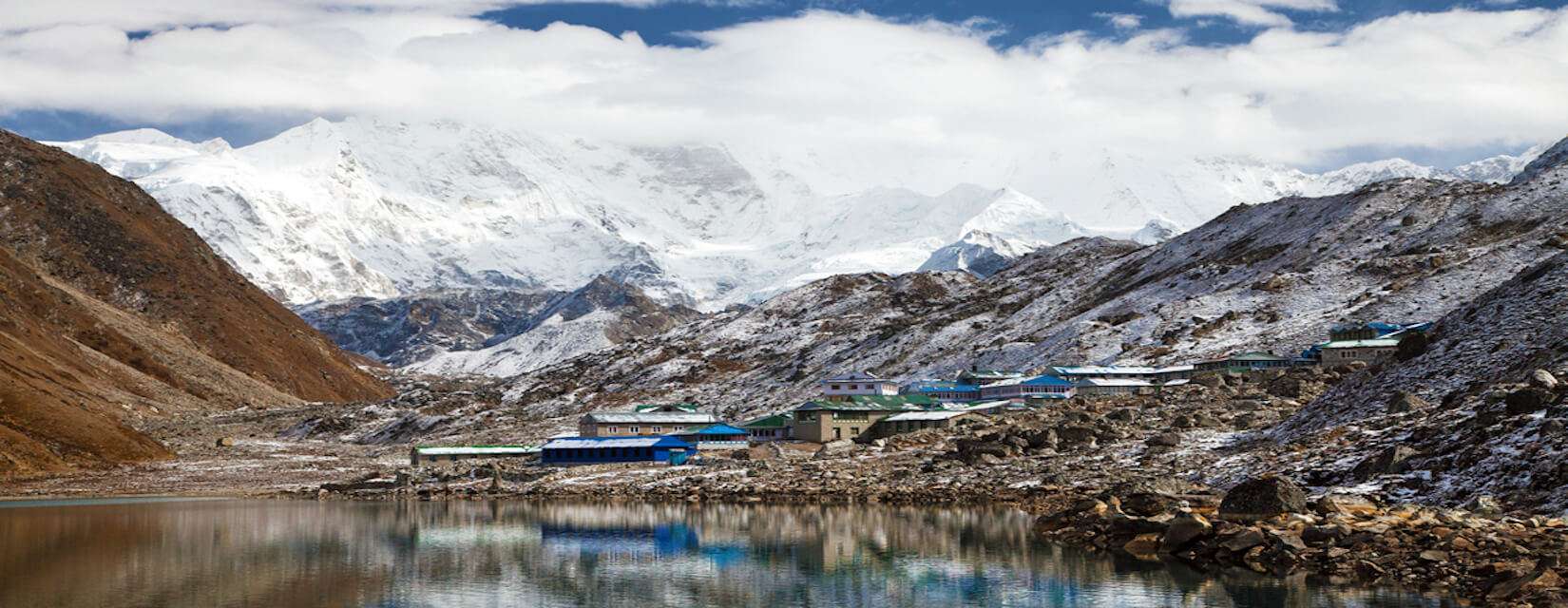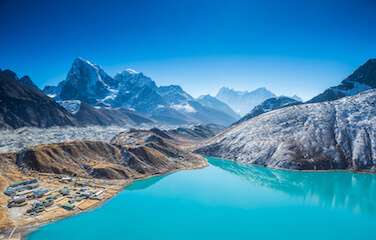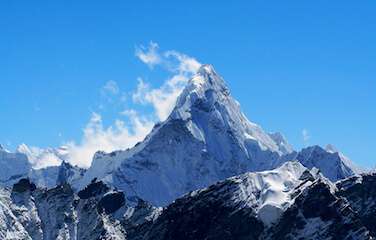Useful Information
Everest Gokyo Lake Trek Travel Insurance
Travel insurance is mandatory to have to join an adventurous trip in the Himalayas. It is for your safety. The travel insurance must cover things like illness, medical emergencies, accidents, death, trip cancellation, and loss of personal baggage & items. All costs for Emergency Evacuation must be paid in cash in Nepal unless an insurance company has agreed to pay all the cost on your behalf. Make sure that your travel insurance covers activities in the Himalayas if you are participating in them.
*Note: Foreigners are not allowed to purchase an insurance policy in Nepal. So make sure to purchase good travel insurance in your country, and it is your responsibility to check whether your insurance policy is adequate or not.
Everest Gokyo Lake Trek Accommodation
Everest Gokyo Lakes Trek accommodations are Lodge and Teahouse. Around Kathmandu, we can find a good facility with comfortable accommodation at the Hotel. The Everest Gokyo Lakes Trek all accommodations are on the twin-shared basis. During the trek, Himalayan frozen Adventure will manage room with attached washrooms. In the teahouse, we have to share the toilet. Single room is available in Kathmandu and the lower elevation trekking region but might be impossible to higher elevations.
Everest Gokyo Lakes Trek Meals
At the Kathmandu has included only breakfast. During the Everest Gokyo Lakes Trek, all meals will be provided. In the Everest region, we can enjoy Nepalese food with international cuisine like Tibetan, Continental, Indian, Tibetan, Italian, etc. Through the trek, we have breakfast/lunch at the teahouse and Dinner will be at the lodge. You can choices different kinds of breakfast, lunch, and dinner by the menu.
Passport & Visa
A passport with at least six months of validity from the return date is mandatorily needed. You can get the Nepalese visa from the Nepalese Embassies or Consulate in your country. You can also get the Nepalese visa upon your arrival at Tribhuvan International Airport in Kathmandu. Do know that there are few countries that have to apply for the Nepalese visa from their own country. Obtaining your visa is entirely your responsibility.
While booking, make sure to put full and correct passport information so that we can get all the necessary permits, tickets, and pay fees on your behalf. If you do not provide the correct information when you make your booking, we will not be able to make the necessary bookings on your behalf and cannot be held responsible.
Acute Mountain Sickness (AMS)
AMS or altitude sickness is one of the main risks while traversing in the high altitude. The main region behind getting AMS is when the body doesn't adjust to the lower level, and the result can be deadly. So it is very important to take proper measures on time. Gaining altitude with constant pace and proper acclimatization days will help reduce the chances of getting AMS.
Similarly, you also have to keep yourself hydrated during the trek, therefore, drink enough water and avoid alcoholic drinks as it dehydrates the body. If you are planning to trek in one of the adventurous trails of Nepal then do keep above things in your mind.
Symptoms of altitude sickness
- Difficulty in sleeping
- Dizziness or light-headedness
- Fatigue
- Headache
- Loss of appetite
- Nausea or vomiting
- Shortness of breath with exertion
Preventive measures
- Include an adequate number of rest days in the itinerary
- Keep yourself hydrated
- Do not drink alcoholic beverages
- Do not gain more than 500 meters in a day
- Try to spend the night in lower altitude
- Acclimatize properly at a lower altitude
- Inform your guide immediately if any of the symptoms you see
- Do not push yourself
Everest Gokyo Lakes Trek Best season
The climatic condition of Nepal differs from place to place depending upon geographical regions. One can have warm and hot wear in the terai whereas can observe the chilling arctic-like weather in the Himalayas. Nepal’s weather is influenced by a maritime and continental factor and has four different seasons, Autumn (September to November), followed by Winter (December to February), Spring (March to May), and finally, there is Summer/Monsoon (June to August).
The best time to go on an adventurous journey in the Himalayas is in Spring (March to May) and Autumn (mid-September to November). These are the best times to go on any treks and climbing trips because of stable weather and a moderate climate. There is only one place in Nepal, where you can go trekking in even monsoon (July to mid-September) and that is Upper Dolpo. This region lies in the rain shadow of Annapurna and Dhaulagiri ranges and therefore does not receive rainfall in the monsoon.
Autumn (September To November)
Autumn (September-November) is one of the perfect seasons to trekking with hiking in Himalayan Nepal, so thousands of trekkers choose these months. In fact, September, October, and November months are will be full of excellent atmosphere as well as beauty, enjoys your journey with joy and beauty. The Autumn season provides reference weather with clear magnificent mountains. The temperature is good than another season. September-November is a great time to express your adventure in Himalayan Nepal. It will also be free from natural disasters such as floods and landslides these months. It's the most famous season to goes high altitude area of Himalayan.
Winter (November To March)
Winter (November-March) is also possible to trek in Himalayan Nepal, the weather condition is stable and the days are clear. December, January, and February are the cold months in Nepal. Days temperatures are cool but the nights are much cold. During the winter trek is risk winds and colder temperatures. Above 3,000m altitude being usually snowfall and freezing. If you are looking for wonderful scenery, let choose the lower elevation trek in Nepal.
Spring (March To May)
Spring (March-May) is the second famous trekking season in Himalayan Nepal. March, April, and May is also a great option to mountain climbing and high altitude trek. At spring morning weather condition will be clear, but the afternoon sky covered by the cloud, and sometimes can be rain. You can get to see beautiful flowers like jasmine, pine, and rhododendron with wild flora. During the Spring, lower altitude trek is mildly warm and above 3,000m quite a moderate temperature. This season also best to express your adventure in Nepal.
Summer (June To August)
In the summer season, the trekkers are less crowded in the Himalayan region will be less. June, July and August are the main raining season in Nepal which involves monsoon. Bad weather can hamper travel, maybe some problems during the journey due to heavy rain. Some travelers prefer to travel at this time as this is also not an emergency period. The weather is hot and almost everyday rains. This season is better for the tour to Tibet and in Himalayan Nepal like Mustang, Dolpo region, and Nar-Phu valley because these regions are in the rain-shadow.
Trekking Equipment
Trekking equipment is the essential material used during the trip to the Himalayas, which is used on a daily basis. Without trekking equipment, your trip may be unsuccessful so we request you please follow the list. If you have not time to buy in your country, so don't worry we can help to buy trekking equipment in Kathmandu. Himalayan Frozen Adventure Pvt.Ltd will make your precious time reference and entertainment.
Trekking Equipment Lists
HEAD
- Headlight
- Sun hat
- Warm hat and scarf
FACE
- Face wipes and towels
- Sunscreen +40
- Sunglass
Hands
- Waterproof & Snowproof Gloves
- Lightweight gloves
Body clothing
- Sleeping bag
- Down jackets
- Sport hiking t-shirts, preferably quick-drying
- Fleece jacket and sweaters
- Poncho and rain jacket
- Socks preferably cotton –mix
- Lightweight cotton trekking pants with folding option
Lists of Footwear
- Water/Snowproof Trekking Boots
- Socks preferably cotton sports socks but take some extra pairs
- Crampon (optional)
Essential gear
- Day Backpack above the 30 L
- Pack covers
- Thermos Bottel- hard bottle that can be used for boiled drinking water
Water peals
- Umbrella / Poncho
- Walking pole if you need it
- Thick Sleeping bag
- Deodorant
- Laundry soap
- Antibacterial Gel
- Toiletries
- Toothbrush
- Shampoo
Personal accessories
- Cell phone
- Watch
- Camera
- Money wallet with Money
- Padlocks
- Plastic bag
- Sewing kit
- Extra p photos and passport photocopies
First-aid Kit
- Diamox (acetazolamide)
- Lozenges
- Elastic bandages
- Moleskin
- Cotton bandages and band-aids
- Lancing needle
- Antibiotic eye-drops
- Thermometer
- Sling
- Paracetamol
- Antiseptic antibacterial cream or solution
- Painkillers
- Anti-emetic for nausea (not at high altitude)
- Loperamide to control diarrhea
- Norfloxacin or Cipro to cure diarrhea, other infections
- Oral rehydration salts
Himalayan Frozen Adventure Pvt. Ltd porter is available for (2 trekkers a porter) who will carry up to 20 kg at maximum; therefore, keep this in mind before you pack your bags!!!





